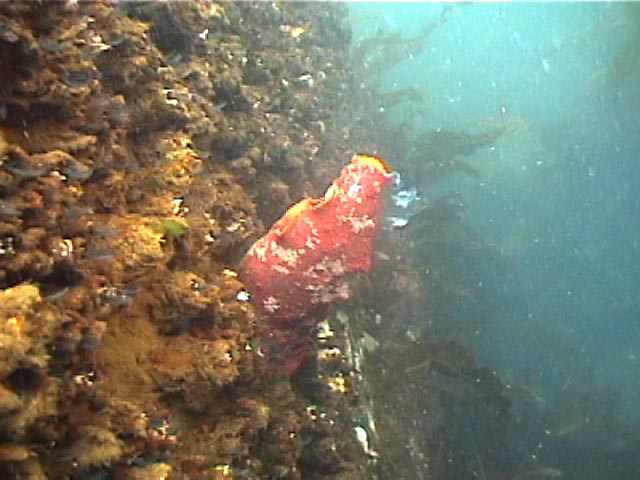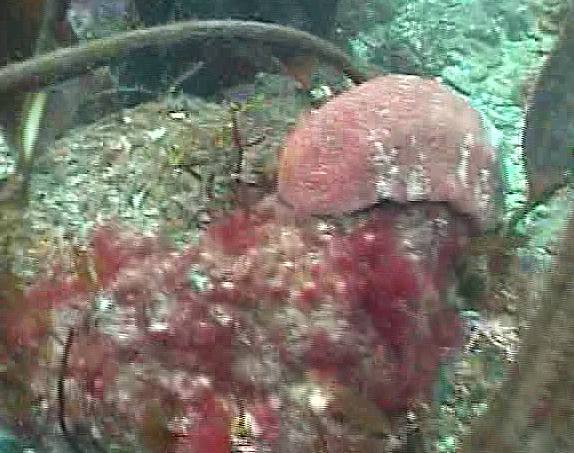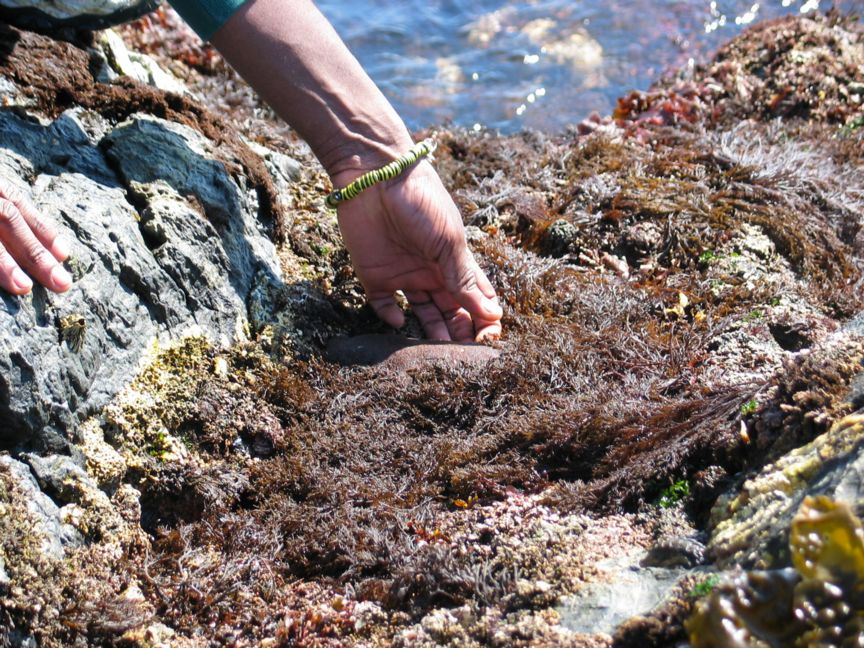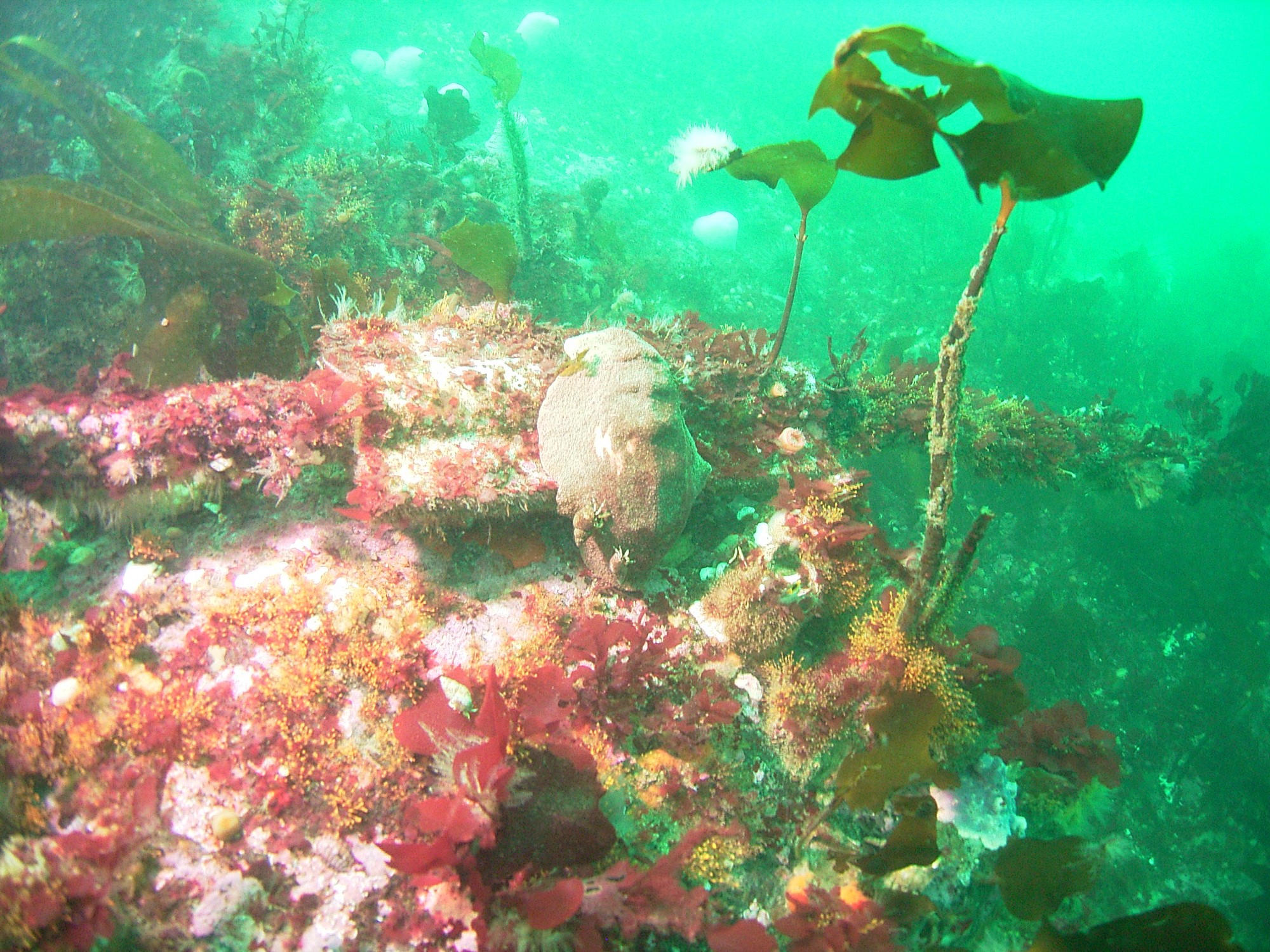Characteristics: Chitons are characterised by their eight calcareous plates that are embedded in their dorsal surface. The Gumboot Chiton is usually dark reddish-brown in colour. The tough girdle that completely overgrows the plates is bristly and leathery in texture. The chiton has a large muscular foot and feeds using the radula.
- Gumboot chiton exposed in the intertidal.
- Subtidal image with Gumboot Chiton
Diet: Chitons, like limpets, are grazers that feed using their rasping radula. The radula consists of two rows of sharp teeth that function by scraping algae and benthic diatoms off rock surfaces.
Reproduction: Chitons are dioecious, which means there are both male and female chitons. The male releases the sperm into the water as shown in the video above, and it is taken up by the females. Fertilised eggs are shed singly or in gelatinous strings. The eggs develop into trochophore larvae before they metamorphose into the adult chiton form.
Classification:
Domain Eukarya
Kingdom Animalia
Phylum Mollusca
Class Polyplacophora
Order Neoloricata
Family Acanthochitonidae
Genus Cryptochiton
Species stelleri
Common Name: Gumboot Chiton

In one section of the video linked below, a very rare sequence is shown. A male Gumboot Chiton on the end of the docks at Race Rocks was shedding his gametes into the water. This was observed by our divers on several consecutive days. in the spring of 2002
This video shows the gumboot chiton in several locations at Race Rocks. Note the gills under the mantle on each side of the large foot. Of particular interest is the rare sequence taken at one meter depth in the surging water right off the docks, showing a male shedding gametes into the water.
Locomotion: Chitons have a broad and flat muscular foot which functions in adhesion as well as locomotion. Chitons move slowly and gradually by waves of muscular activity called ‘pedal waves’. The plates fuction to help them attach onto curved surfaces of the rocky intertidal zone.
Predators: The chiton’s main predator is the sea star Pisaster ochraceous, which are common on the coasts of Vancouver Island, but rare at Race Rocks and certain species of octopus.
Longevity: Gumboot chitons can live for approximately 20 years and can grow up to 30cm.
Other Members of the Phylum Mollusca at Race Rocks.
and Image File |
 The Race Rocks taxonomy is a collaborative venture originally started with the Biology and Environmental Systems students of Lester Pearson College UWC. It now also has contributions added by Faculty, Staff, Volunteers and Observers on the remote control webcams. The Race Rocks taxonomy is a collaborative venture originally started with the Biology and Environmental Systems students of Lester Pearson College UWC. It now also has contributions added by Faculty, Staff, Volunteers and Observers on the remote control webcams. |
original by: Sarah Mason PC yr 28



